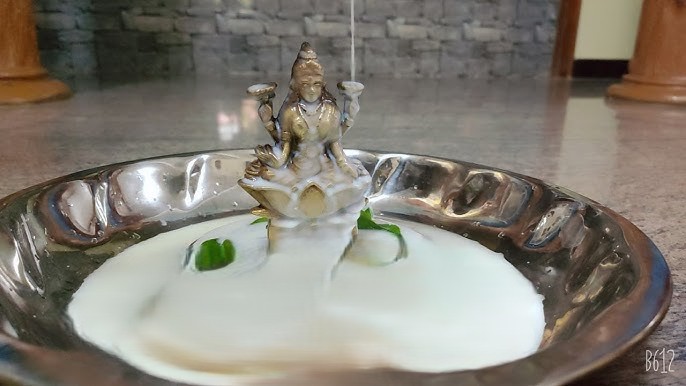Nijabhishekam Sri Lakshmi Narasimha Swamy Temple

About
Nijabhishekam is a holy and special ritual. It is done for the main god in Hindu temples. It is mostly seen in temples of Lord Shiva, Lord Vishnu, and other main gods. The word "Nijabhishekam" means "personal sacred bath." "Nija" means personal or direct. Priests chant Vedic mantras during the ritual. It is done in private or with few devotees. It usually happens early in the morning before darshan. This ritual is very holy and special. It gives a close and personal feeling with the god. Devotees need to book in advance and get a special ticket. In big temples like Tirumala, it is a major event. Many devotees come to see Lord Venkateswara's Nijabhishekam.
Puja Vidhi refers to the detailed procedure of performing a Hindu worship ritual to honor and invoke blessings from a deity. The puja typically begins with Achamanam (purification), followed by Sankalp (taking a vow), where the devotee states the purpose of the puja. Then comes Dhyana (meditation on the deity) and Avahanam (invocation). The deity is offered Asana (seat), Padya (water for feet), Arghya (water for respect), and Achamaniya (water to sip). This is followed by Snana (symbolic bath), Vastra (clothes), Gandha (sandal paste), Pushpa (flowers), Dhoop (incense), Deep (lamp), Naivedya (food offering), and Tambulam (betel leaf). Mantras and stotras are chanted throughout. Finally, Aarti is performed, and the devotee seeks forgiveness for any errors in the ritual. The puja concludes with Pradakshina (circumambulation), Namaskar (prostration), and Prasad distribution. Puja Vidhi varies slightly based on the deity, tradition, and occasion.
Book Nijabhishekam Sri Lakshmi Narasimha Swamy Temple
Benefits of Puja
There are several advantages to doing Nijabhishekam puja.
It has mental, emotional and spiritual benefits.
The devotee and the divinity are connected via puja.
It gives tranquillity, blessings and protection.
It instills values of appreciation, commitment and discipline.
Mantra chanting aids in mental concentration.
It also reduces stress.
Lighting lamps and offering flowers creates a holy feeling.
These acts purify the space and bring calm.
Puja removes negative energies, or doshas.
It brings good health and prosperity.
It helps fulfill true wishes.
Puja builds humility and surrender to God.
In families, it brings people closer.
It teaches cultural values.
It creates a peaceful home.
Puja is also like meditation.
It improves mindfulness and spiritual growth.
Simple or grand, puja brings divine energy into life.
Place of Puja
At Sri Lakshmi Narasimha Swamy Temple
Required Things (Puja Samagri)
The puja samagri is included in the Dakshina
Kalash (कलश)Gangajal (गंगाजल) Kumkum (कुमकुम)Haldi (हल्दी)Chandan (चंदन)Akshat (अक्षत)Flowers (फूल)Garland (माला)Deepak (दीपक)Dhoop/Agarbatti (धूप/अगरबत्ती)Panchamrit (पंचामृत)Naivedya (नैवेद्य)Coconut (नारियल)Betel leaves and nuts (पान और सुपारी)Camphor (कपूर)Matchbox or lighter (माचिस)Bell (घंटी)Water in small lota (लोटा पानी)Plate and spoon (थाली और चम्मच)Cloth for deity (वस्त्र)Thread (मौली/कलावा)
When to Perform Nijabhishekam Sri Lakshmi Narasimha Swamy Temple?
Every Day
Puja Duration
45 Minutes To 1 Hours
Yajman Details
- Total Yajman: 1

